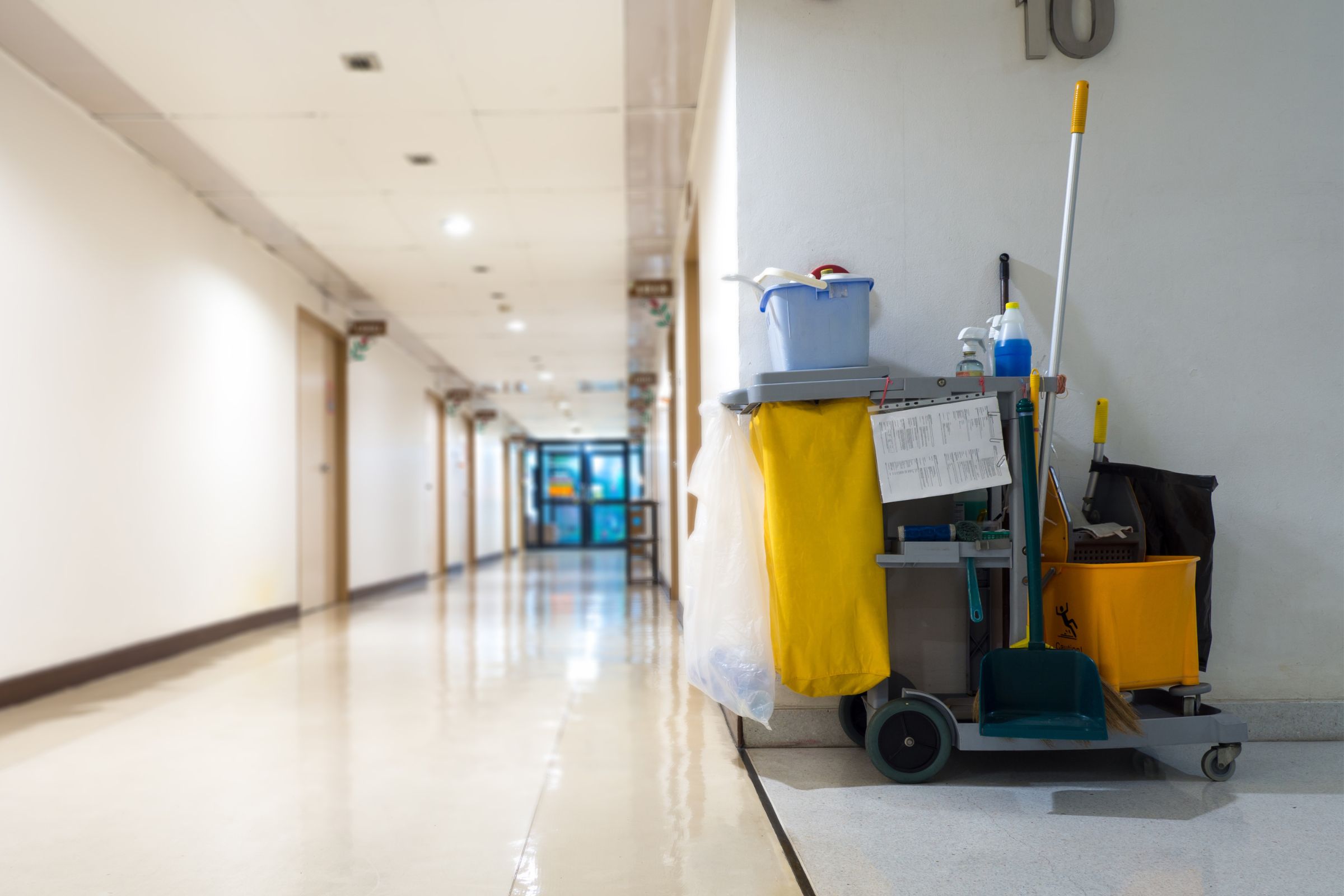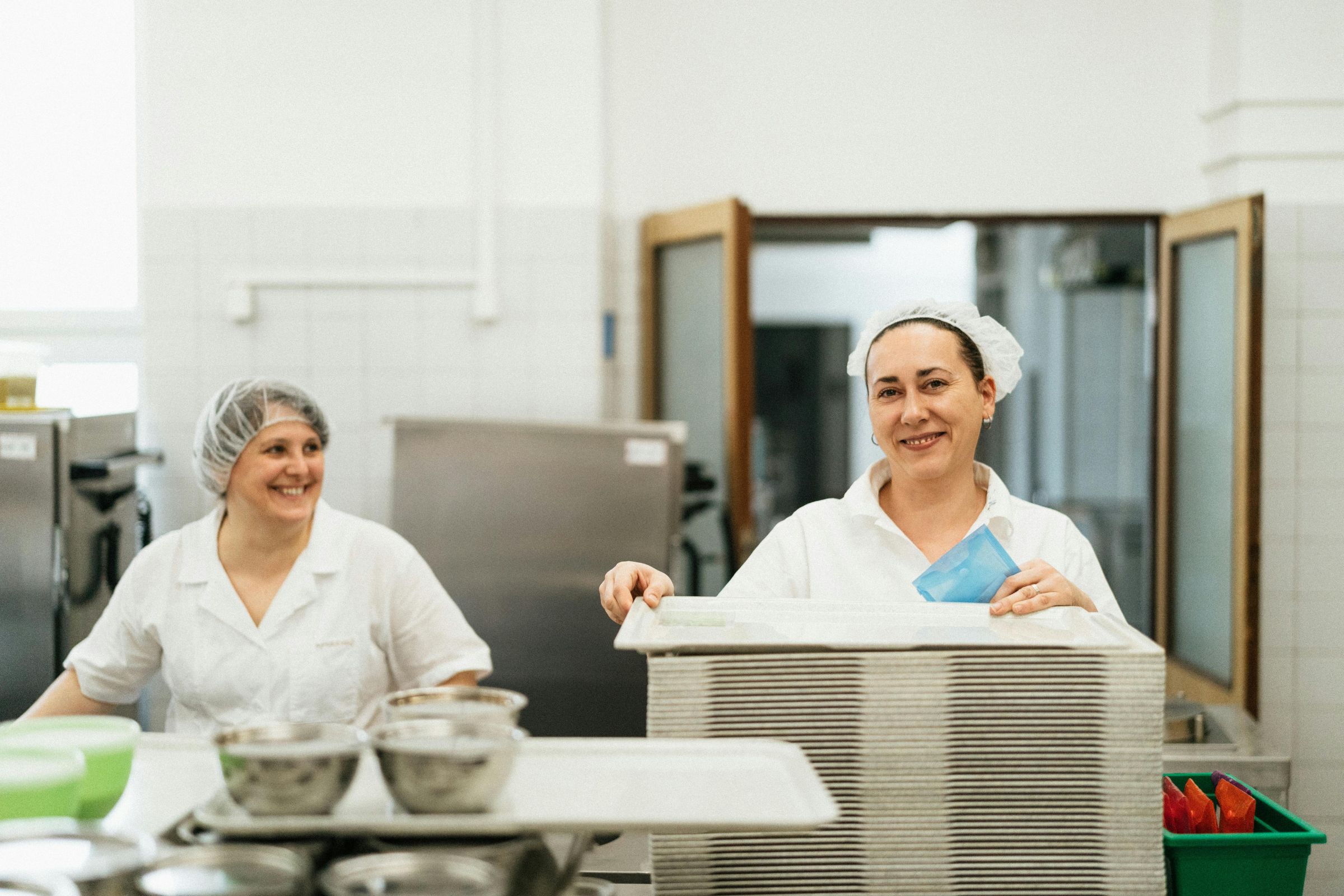Table of Contents
Related Articles
Protecting Your Custodial Team: Preventing Overexertion Injuries In Educational & Cultural Institutions

The Hidden Cost Of Custodial Injuries
Custodial and maintenance staff are the backbone of any educational institution or cultural organization, ensuring safe and clean environments for students, visitors, faculty, and staff. However, these essential workers face some of the highest injury risks in their facilities. Recent data reveals that facility workers, including custodians and maintenance personnel, experience the most severe occupational injuries among all employee categories, with overexertion leading the list of serious workplace incidents.
For ISCC members—whether you’re managing a private school, college, museum, library, or performing arts center—understanding and addressing these risks isn’t just about compliance. It’s about protecting valued team members while managing workers’ compensation costs effectively.
Understanding Overexertion Injuries
What Are Overexertion Injuries?
Overexertion injuries occur when physical demands exceed a worker’s capacity, resulting in strains, sprains, and musculoskeletal damage. These incidents don’t happen in dramatic accidents—they develop gradually through repetitive stress or occur suddenly during routine tasks.
In educational facilities and cultural institutions, these injuries typically involve:
- Lifting and moving heavy equipment, supplies, furniture, or exhibition materials
- Pushing and pulling floor buffers, cleaning carts, or specialized maintenance equipment
- Repetitive motions during cleaning, polishing, or artifact care tasks
- Awkward positioning while reaching, bending, or working in confined gallery spaces
The Financial Impact
Overexertion injuries account for the largest portion of workers’ compensation expenses nationwide, with average claims reaching $15,000 per incident.
For self-insured groups like ISCC members, a single serious back injury can result in:
- Medical expenses ranging from $8,000 to $50,000+
- Lost time costs averaging 12-15 days per incident
- Potential long-term disability claims
- Increased experience modification factors
- Temporary staffing and overtime expenses
- Disrupted facility maintenance schedules
Common Risk Factors In Educational & Cultural Facilities
Unique Challenges Across Institution Types
Both educational facilities and cultural institutions present distinct physical demands that increase overexertion risk.
Heavy Equipment Operations
- Floor buffers and scrubbers weighing 100+ pounds
- Industrial vacuum cleaners and carpet extractors
- Moving classroom furniture, exhibit cases, or performance equipment
- Specialized cleaning tools for laboratories, galleries, or conservation areas
Time Pressures Custodial teams often work in compressed timeframes around institutional schedules:
- Cleaning between class periods or before museum opening hours
- Event setup requiring rapid space reconfiguration
- Emergency responses during active programming
- After-hours work with limited support staff
Facility-Specific Demands The diverse nature of these institutions compounds physical challenges:
- Multi-story buildings requiring equipment transport between levels
- Large spaces like gymnasiums, auditoriums, or exhibition halls
- Delicate environments requiring specialized cleaning (labs, conservation areas, performance spaces)
- Climate-controlled areas with restricted access windows
Staffing Constraints Budget pressures affect both educational and cultural institutions:
- Reduced workforce handling the same facility demands
- Limited staff for two-person lifting requirements
- Overtime work increasing fatigue levels
- Cross-training demands across different facility types
Massachusetts weather adds seasonal complexity, with winter requiring salt application, snow removal, and increased facility maintenance as heating systems work harder and visitors track in moisture and debris.
Prevention Strategies That Work
1. Implement Proper Lifting Protocols
Effective prevention begins with clear, enforceable lifting protocols tailored to your institution type.
Team Lifting Requirements
- Establish weight thresholds (typically 50 pounds) requiring two-person lifts
- Create buddy system policies for moving furniture, exhibit materials, or equipment
- Post visual reminders in custodial areas and storage spaces
- Train staff to evaluate awkward shapes and grip limitations
Body Mechanics Training
- Annual refresher courses on safe lifting practices
- Job-specific demonstrations using actual workplace scenarios
- Monthly toolbox talks addressing real lifting challenges
- Peer instruction programs leveraging experienced staff knowledge
2. Equipment Solutions
Modern cleaning technology offers numerous options for reducing physical strain without compromising quality standards required in educational and cultural settings.
Ergonomic Tools
- Adjustable-height cleaning equipment to reduce bending
- Lightweight vacuum cleaners suitable for delicate environments
- Wheeled carts designed for different facility layouts
- Telescoping handles eliminating excessive reaching
Mechanical Aids
- Furniture sliders for moving classroom desks or gallery pieces
- Lift-assist devices for overhead tasks
- Dollies appropriate for transporting materials safely
- Power-assisted equipment with comprehensive training
Equipment investments require proper training and maintenance to maximize injury prevention benefits while protecting valuable institutional assets.
3. Workload Management
Realistic Scheduling
- Build adequate time into cleaning schedules around programming
- Rotate physically demanding tasks among qualified team members
- Plan major projects during institutional breaks or closed periods
- Coordinate with programming staff to optimize cleaning windows
Task Rotation
- Vary daily assignments to prevent repetitive strain
- Balance heavy physical work with detail-oriented tasks
- Cross-train staff while considering physical limitations
- Distribute intensive projects across multiple days
Creating a Culture Of Safety
Management Commitment
Effective safety leadership involves regular facility walks focused on observing work practices rather than just inspecting results. Investment decisions—from staffing levels to equipment purchases—reflect true safety priorities and send clear organizational messages.
Safety programs work best when they include:
- Regular safety meetings addressing physical work demands
- Open communication channels for reporting concerns
- Recognition programs celebrating safe work practices
- Budget allocations supporting proper equipment and training
Employee Engagement
Custodial staff possess invaluable insights into daily risk factors that management may not observe during normal operations.
Active Participation Strategies
- Include custodians in institutional safety committees
- Create anonymous feedback systems for safety concerns
- Encourage suggestions for process improvements
- Implement near-miss reporting without blame or discipline
Communication Systems
- Peer instruction components in training programs
- Regular toolbox talks addressing real workplace scenarios
- Visual safety reminders in work areas
- Multilingual materials when appropriate for diverse staff
Early Intervention Programs
Pre-employment Considerations
- Physical capability assessments for demanding positions
- Clear communication of job requirements during hiring
- Proper job matching based on individual capabilities
Wellness Initiatives
- Pre-shift stretching programs
- Ergonomic assessments of individual work stations
- Heat stress recognition training for summer months
- Hydration education for physically demanding work
Massachusetts-Specific Considerations
Regulatory Requirements
Massachusetts institutions must comply with:
- Department of Industrial Accidents (DIA) reporting requirements
- Form 101 filing within seven days of injury notification
- OSHA standards for workplace safety
- Workers’ compensation mandates for all employees
Weather-Related Challenges
New England’s climate creates seasonal variations requiring adapted safety approaches:
Winter Hazards
- Snow removal increasing back strain risk
- Ice melting compounds in heavy bags
- Increased indoor maintenance demands
- Slippery conditions affecting equipment mobility
Seasonal Planning
- Modified schedules during extreme weather
- Weather-appropriate protective equipment
- Adjusted hydration protocols for summer heat
- Facility preparation activities during season transitions
Red Flags: When To Seek Help
Contact the ISCC and FutureComp Service Team immediately if you notice:
- Increasing workers’ compensation claims from custodial staff
- Multiple employees reporting similar discomfort
- High turnover in maintenance positions
- Frequent modified duty requests
- Equipment-related incident reports
Early intervention prevents minor issues from becoming major claims while demonstrating genuine safety commitment.
Best Practices For ISCC Members
Documentation & Training
- Maintain comprehensive safety training records
- Document equipment inspections and maintenance
- Track injury patterns for continuous improvement
- Regular workers’ compensation data review
Partnerships
- Collaborate with vendors on ergonomic solutions
- Partner with healthcare providers for prevention programs
- Engage safety consultants for facility-specific assessments
- Share best practices with other ISCC member institutions
Implementation Strategy
Start With Assessment
- Review injury data for custodial claim patterns
- Conduct facility audits focusing on physical demands
- Survey staff for perceived risks and concerns
- Prioritize high-risk, high-frequency tasks
Build Systematically
- Establish lifting protocols and basic training
- Invest in essential ergonomic equipment
- Develop employee engagement initiatives
- Create ongoing evaluation and improvement processes
The ISCC Advantage
ISCC members benefit from collective wisdom in addressing custodial safety challenges across both educational and cultural institutions. Our loss control professionals understand the unique risks these environments present.
Member Resources Include:
- Specialized guidance for institutional settings
- Safety workshops and networking opportunities
- Claims management support when injuries occur
- Access to proven practices from similar organizations
- Cost-effective group solutions for safety improvements
The collaborative ISCC membership means successful safety innovations developed by one member can benefit the entire group, accelerating improvement while reducing individual development costs.
Protecting your custodial team requires commitment, resources, and expertise. By prioritizing custodial safety, educational institutions and cultural organizations demonstrate commitment to all employees while protecting financial interests. Your custodial team’s safety directly impacts the experience of students, visitors, and staff—making this investment essential for institutional excellence.





